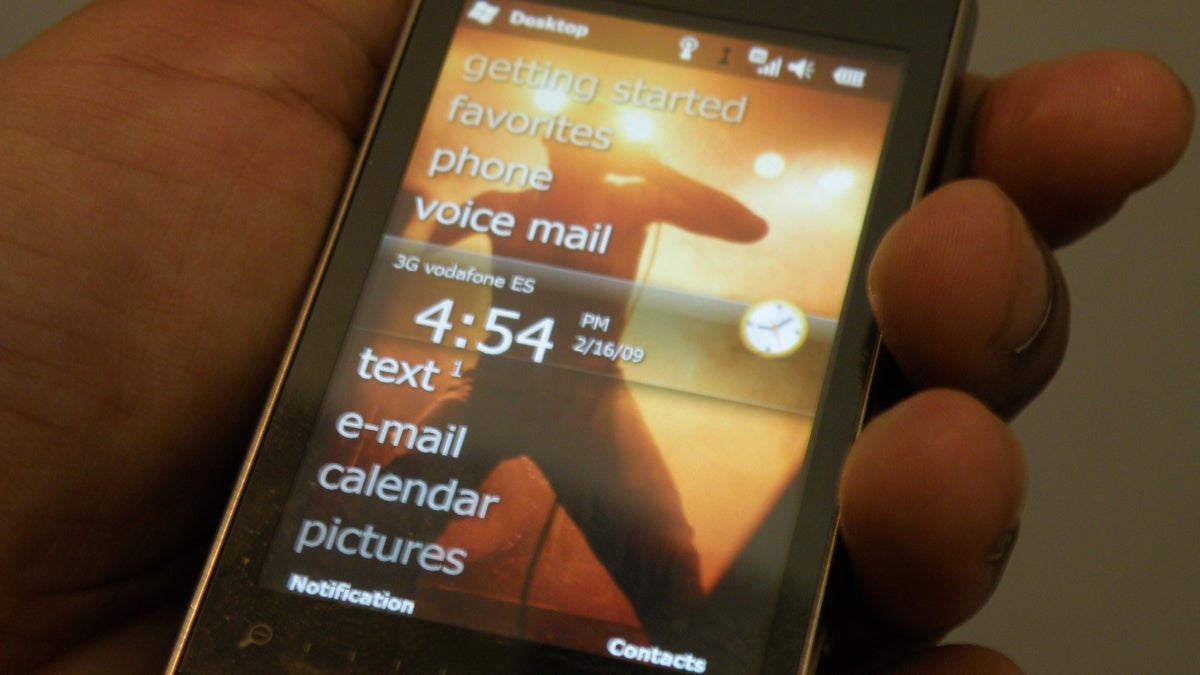Microsoft hopes 'Windows phone' has a ring to it
The software maker is trying to push a new brand as well as update its cell phone operating system to be more "finger friendly."

Microsoft is trying to sell the world on the notion of a "Windows phone."
The first part of that effort is simple. It's a rebranding exercise. Although Microsoft will continue to sell its Windows Mobile operating system, it is going to put its marketing muscle behind the term "Windows phone" to describe the devices that run its software.
The second part is trickier: convincing consumers that they want a Windows phone as opposed to all of the other smartphones on the market, such as the iPhone, BlackBerry, or Palm's Pre, to name just a few.
On Monday at the Mobile World Congress event in Barcelona, Spain, the company is showing off Windows Mobile 6.5, an update to its operating system aimed at making the software more "finger friendly" and just more appealing to consumers in general. The update, which won't show up on phones until the fourth quarter of this year, also features an update to the mobile Internet Explorer browser and a new "marketplace" for buying software that can run on the phone.
Microsoft will also formally announce its My Phone backup and restore service, some details of which leaked out earlier this month. The service is designed to not only make sure things like calendar and contact data are synced to the Web, but also other phone data such as photos and text messages.
These are the kinds of improvements that Windows Mobile boss Andy Lees said he was alluding to in an interview with CNET last month, where he laid out Microsoft's vision for the phone.
"We talked about importance of the device being easier to use and being a window in on your life," Lees said in an interview on Friday, shortly before he headed to Barcelona.
In the earlier interview, Lees acknowledged that Microsoft had fallen somewhat behind by trying to offer software that could run on "the least common denominator" of hardware, but said that the next 12 to 18 months would bring a series of announcements that would help Microsoft thrive in a world in which phones will soon have dual-core processors and graphics abilities to rival the original Xbox.
With the new software update, Microsoft is adding a rival to the iPhone's App Store as well as making its software easier to use without having to reach for a stylus or flip down a keyboard.
But it remains a question whether Microsoft's changes will be enough, particularly as rivals improve their products over the coming year.
On the browsing front, for example, Microsoft is focusing on the fact that, while other browsers may look nice, Mobile IE can do more than the others because it is compatible with the desktop Internet Explorer 6 and with Adobe's Flash. Microsoft commissioned a study that found its browser can execute "up to 48 percent more assigned tasks than the other browsers and phones studied."
However, it is unclear that such metrics--as opposed to just plain ease of use--are what consumers use to select a phone.
Lees notes that supporting multitouch, a la the iPhone, has its downsides as well. Such phones require capacitive screens which are less precise, making things like handwriting recognition less feasible. Microsoft sells many Windows phones, for example, in Asian countries where handwriting recognition can prove far quicker than a keyboard for entering text.